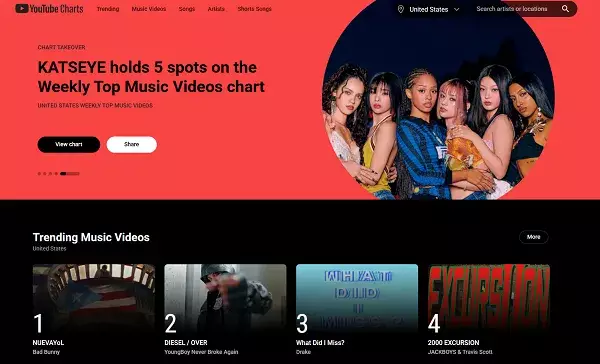YouTube’s decision to eliminate the traditional “Trending” and “Trending Now” listings marks a pivotal shift in how digital audiences connect with content. For years, the “Trending” page served as a beacon for viral videos—an intuitive window into what the platform’s global community was buzzing about. However, this old model, rooted in a singular list of viral clips, has increasingly become obsolete in an era characterized by niche communities and micro-trends. The platform’s evolution reflects a clear recognition that modern viewers are no longer drawn to monolithic popularity markers but prefer tailored, context-specific content cues.
This transition underscores a larger philosophical change in digital content exploration: moving away from a one-size-fits-all model towards value-driven categorization. In a way, YouTube’s previous approach, while effective in its time, oversimplified the complex web of online trends now woven across diverse fandoms and interest groups. As popularity disperses into countless micro-communities—gaming, fashion, niche music genres, and meme subcultures—the notion of “viral” has fragmented, demanding more nuanced tools for discovery.
By replacing the broad trending lists with category-specific charts, YouTube is acknowledging that relevance hinges on understanding individual preferences and situational interests. The new focus aims to create a more organic, personalized experience that aligns with real user behaviors—clicking, searching, lurking in comments, or engaging with Shorts. It reflects an industry-wide understanding that digital attention spans are shifting, favoring hyper-focused content tailored to specific tastes rather than broad, ephemeral trends.
From Viral Lists to Curated Categories: A Strategic Realignment
The platform’s strategic move towards niche charts demonstrates an insightful recognition of the evolving engagement patterns within its ecosystem. By highlighting specialized categories—such as trending music videos, top podcasts, and upcoming movie trailers—YouTube effectively redirects attention away from the general “popularity contest” to more tailored content exploration. This approach benefits both creators and viewers: creators of niche content gain clearer visibility within dedicated categories, and viewers are more likely to encounter videos aligned with their unique interests.
This incremental shift also reflects YouTube’s deeper understanding of algorithm-driven engagement. Traditional trending lists often relied on aggregate metrics, which could favor content that spikes in popularity quickly but doesn’t sustain long-term engagement. The new model emphasizes continuous interest within specific verticals, aligning discovery with consistent viewer preferences. In essence, it’s less about viral waves and more about cultivating persistent communities who see their favorite content regularly showcased.
Furthermore, maintaining the Gaming Explore page as the exclusive hub for gaming trends suggests targeted curation rather than broad, platform-wide trend capital. It indicates a deliberate choice to preserve the gaming community’s identity and dynamic within its own dedicated space, rather than diluting it with broader trending lists. This segmentation prioritizes quality over quantity, ensuring that niche communities remain vibrant and well-represented.
The Power Shift: Personalized Algorithms and User Engagement
Perhaps the most significant implication of this change lies in YouTube’s enhanced reliance on algorithmic personalization. Instead of broad trend lists, the platform promises to deliver content recommendations aligned with individual user behaviors—view history, search patterns, comments, and engagement with Shorts. This shift supports a more sustained and immersive user experience, where viewers are effortlessly guided into content universes that resonate personally.
Critics might argue that removing prominent trend displays could diminish the sense of discovery for casual users. However, YouTube’s existing recommendation system has evolved into a sophisticated engine capable of surfacing relevant content without the need for overtly promoted trend lists. This suggests that the platform perceives “discovery” less as a matter of spotlighting viral hits and more as a personalized journey—one that encourages viewers to spend more time scrolling through tailored content rather than fleeting trend alerts.
This focus also subtly capitalizes on the psychology of continuous engagement. When users are constantly presented with videos similar to their viewing pasts, the platform nurtures a sticky environment that promotes longer watch times. In this context, “discovery” is less about unexpected surprises from trending sections and more about an ever-expanding universe of personalized content curated by intelligent algorithms.
Implications for Creators and Content Strategy
This transformation places a new premium on creator adaptability. To succeed within these niche-focused charts, content producers must pivot towards producing targeted, high-quality videos tailored for specific categories. Generic viral schemes may no longer suffice as the primary means of visibility. Instead, creators who understand their audiences’ nuanced preferences and optimize their content accordingly will find better opportunities for exposure.
The shift also emphasizes the importance of consistent branding within categories. Successful creators will need to cultivate their presence within specific niches—building loyal communities rather than chasing fleeting viral moments. This approach fosters sustainable growth and a more meaningful connection between creators and audiences.
Another strategic consideration revolves around discovery pathways. With trending lists less prominently featured, creators and marketers must leverage other mechanisms—like personalized recommendations, community engagement, and strategic collaborations—to increase visibility. Essentially, success will increasingly depend on building a dedicated following within discreet categories rather than relying on platform-wide trending metrics.
The move toward category-centric discovery surfaces a broader truth: the future of online engagement is more personalized, community-driven, and category-specific. Platforms like YouTube are adapting their systems to meet these expectations, for better or worse, shaping the way users learn about new content and how creators plan their digital strategies. This evolution, powered by nuanced algorithms and targeted curation, promises a more tailored but potentially more complex landscape for content discovery.

